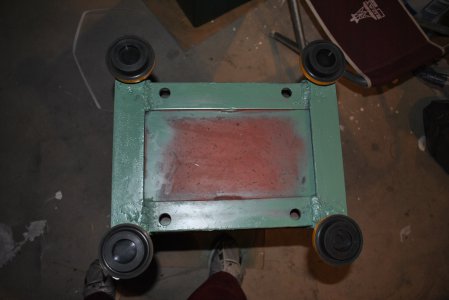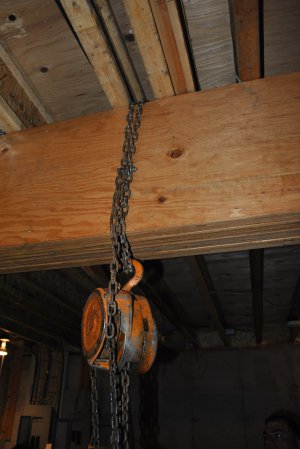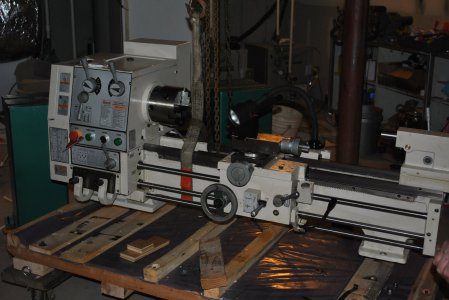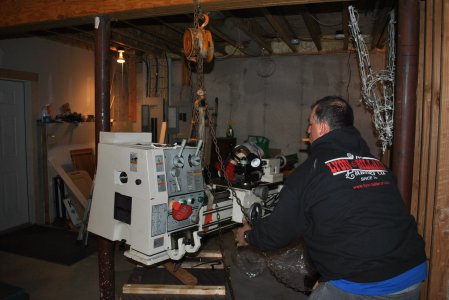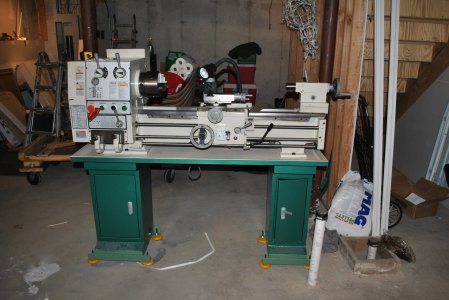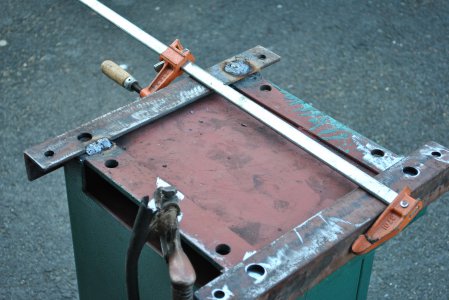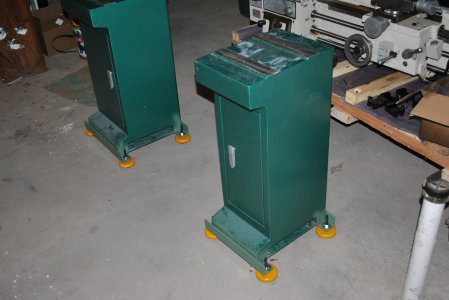- Joined
- Apr 8, 2013
- Messages
- 1,980
Got the machine mounted on the base today. I didn't like the mounting holes under the machine so I welded on some extensions and drilled them for heavy machinery leveling pads. Hoisted the lathe up and slid the base under. Picking the machine up and bolting to the base took about an hour thanks to my son coming over to help . . ...............................................................